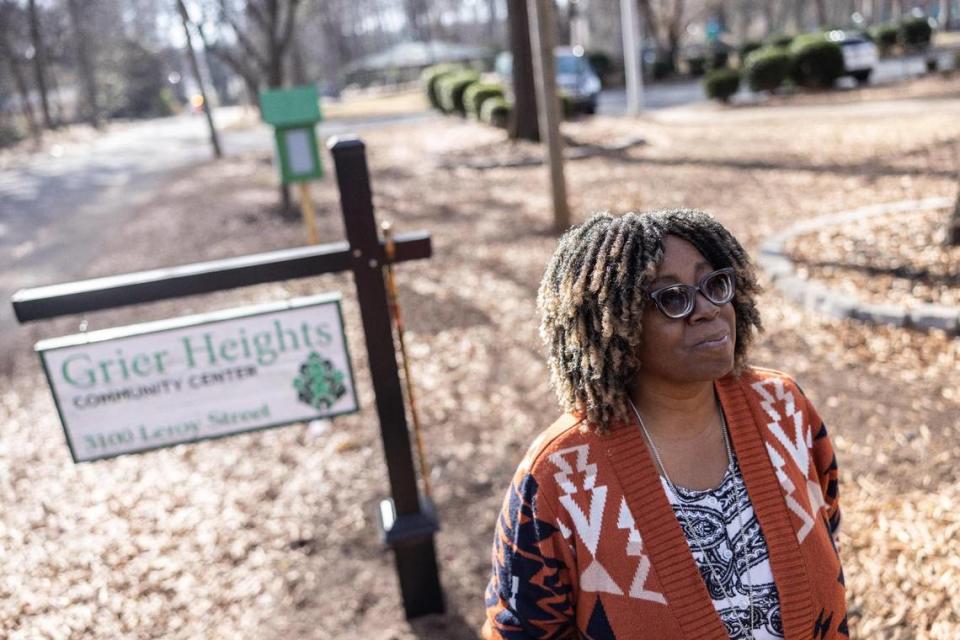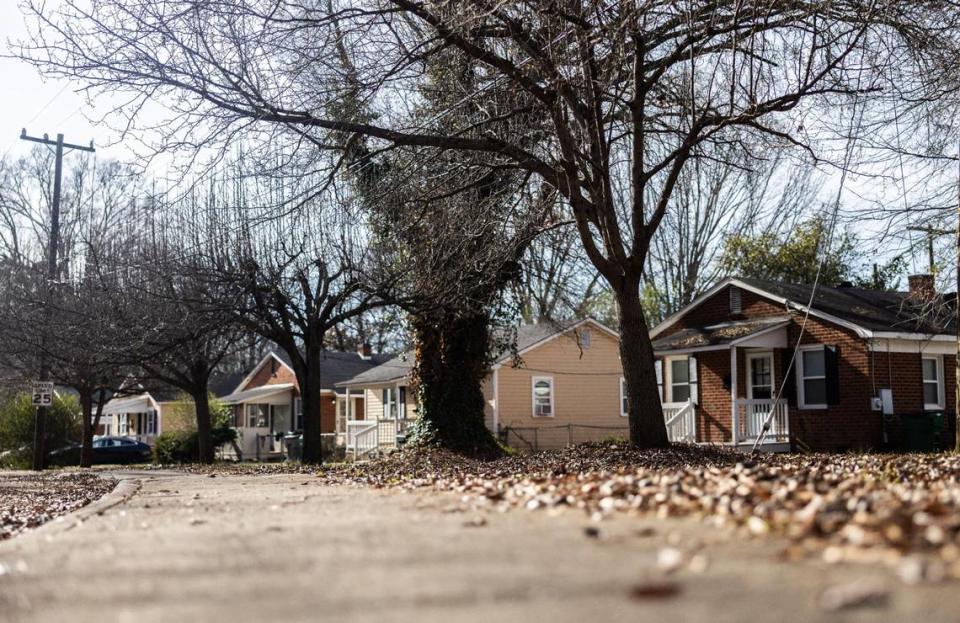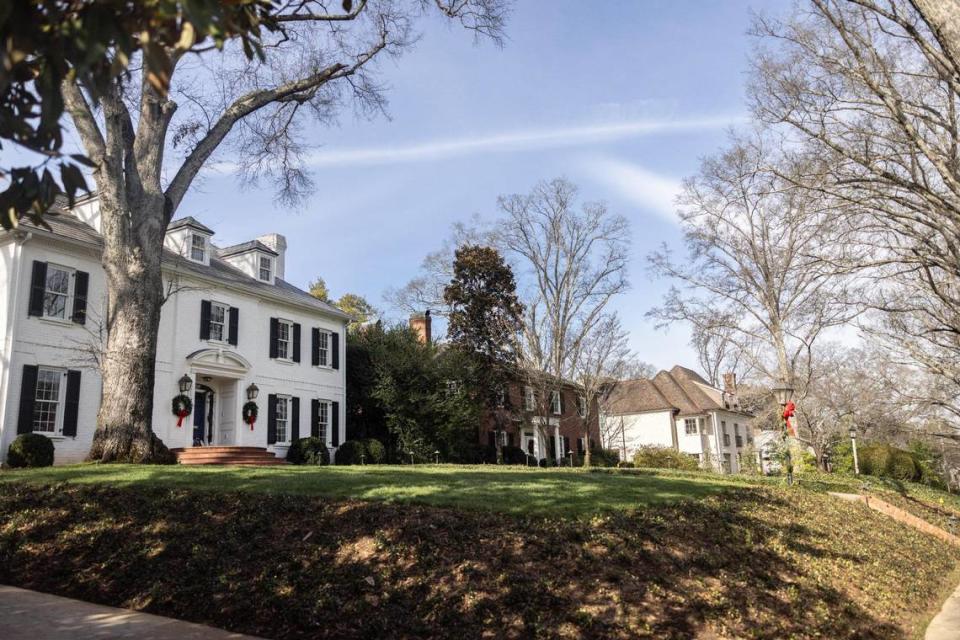In Mecklenburg, one side of this street earns $230,000 more than the other half
Nowhere in Mecklenburg County is the income gap between the haves and the have-nots starker than along a portion of Randolph Road, just south of uptown.
Here, a single road and some willow oak trees separate Charlotte’s wealthiest neighborhood from its poorest.
West of Randolph Road is Eastover, with pristine lawns, million-dollar homes and a median household income of more than $250,000, the highest in the county, according to newly released census data.
East of Randolph Road is Grier Heights, where the household income is less than $21,000, the lowest in the county, a Charlotte Observer analysis of the census data found. That’s an income gap of roughly $230,000.
“The feeling of disparity is very high,” said Judi Brown, a seven-year Grier Heights resident. “When you drive out of here and you go into Cotswold and you go into Eastover and you go into Myers Park, we automatically feel that these are not our people. These are not people who have the same life experiences as I do.”
The median household income in Cotswold tops $125,000. In Myers Park, it surpasses $230,000, according to the census estimates, which covered the five-year period between 2018-2022.

While the income disparity between Eastover and Grier Heights is the largest in the county, it’s not uncommon for homes in Mecklenburg’s wealthier neighborhoods to earn $100,000 or more than homes in its poorer communities, the Observer analysis found.
In some cases, these communities are separated by just a few miles. For instance:
▪ In south Charlotte, towards Matthews, 2 miles separates Stonehaven, where the median household income is $157,600 from East Forest, where the household income is $47,300.
▪ Further south, people in Olde Providence South homes make $185,000. Three miles west in Seven Eagles, they bring in $42,700, data show.
▪ Then there’s Eastover and Grier Heights, separated by only Randolph Road near Mint Museum Randolph. Eastover’s median household income is 12 times higher than its neighbor across the street, data show.
A world away
Dan Morrill, professor emeritus of history at UNC Charlotte, lives on the edge of Eastover, “in a bubble,” as he calls it. The neighborhood was developed in the 1920s with deed restrictions that allowed only white residents, he said. Those restrictions were ruled unconstitutional in the 1960s, but Eastover is still 99% white, according to census estimates.
More than 90% of the residents there have a bachelor’s degree.
“Capitalism is the most dynamic system we have to create wealth,” Morrill said. “But it has a flaw. There are a whole bunch of people who are left behind.”
Brown lives about a mile and a half to the east of Morrill, across Randolph Road. But she said her neighborhood, home to people who work at 7-11, Starbucks and in other service-related jobs, might as well be a world away.
Grier Heights is mostly Black. Less than 1% of its residents have a bachelor’s degree and nearly 60% live below the poverty line, census data show.
“You have very, very poor people here,” said Brown, who founded and runs Project 70Forward, a nonprofit that supports people with disabilities. “It’s definitely a have and have-not.”

Disparities in race and income in Mecklenburg
Twenty-five of Mecklenburg County’s 300-plus census tracts — neighborhood-size boundaries the federal government uses for census counts — have a median household income of more than $150,000. Six neighborhoods have a median income of more than $200,000.
These areas dot the county’s northern region and fill the wedge south of uptown, between South Boulevard to the west and Independence Boulevard to the east.
Meanwhile, 44 neighborhoods have a median household income of less than $50,000 and four have an income of less than $30,000, the Observer analysis found.
The income disparity is not unique to Charlotte, said Ismaail Qaiyim, principal attorney at the Queen City Community Law Firm, which specializes in eviction prevention and housing discrimination. Most major metro areas suffer from an income gap among their neighborhoods.
But Charlotte is atypical in some ways, Qaiyim said.
Yes, it experienced redlining and urban renewal like many other cities. But city leaders also have failed to attach requirements to publicly funded projects that would help that would help low-income residents, he said.
And the city’s booming banking industry, which supports thousands of high-paying jobs, further widens the income gap.

“Those things add fuel to the fire that heightened inequality in a lot of ways,” said Qaiyim, adding that much of the inequality involves Black residents.
At $56,000, median household income for Black residents is not only lower than that of white, Asian and Hispanic residents, but it is also the slowest growing income, census data show.
In the years before and after the pandemic, income for Black homeowners increased 12.6%, compared to 15% for whites and 20% for Hispanic residents.
Predominantly Black neighborhoods like Lincoln Heights, Washington Heights, Biddleville and Enderly Park, all north of uptown, have a median income less than $50,000.
Grier Heights is about three-quarters Black, and its median household income only recently topped $20,000.
But Morrill, Brown and Qaiyim said they don’t think Grier Heights will stay like that for long. Change is coming.
White residents have moved into many of the new houses built near Randolph Road, Brown said. And the neighborhood’s shopping center, Grier Plaza on Wendover Road, is getting a makeover, which includes a Starbucks and Chick-fil-A.
It’s a Catch-22, Brown said. The improvements are great, but Brown doesn’t want them to come at the expense of what makes Grier Heights special — residents who know each other and support each other with programs like food drives and mentoring.
But change will happen, Qaiyim said.
“It will most likely will be a neighborhood that’s unaffordable for someone who’s not making a six-figure income or close to a six-figure income,” he said.

